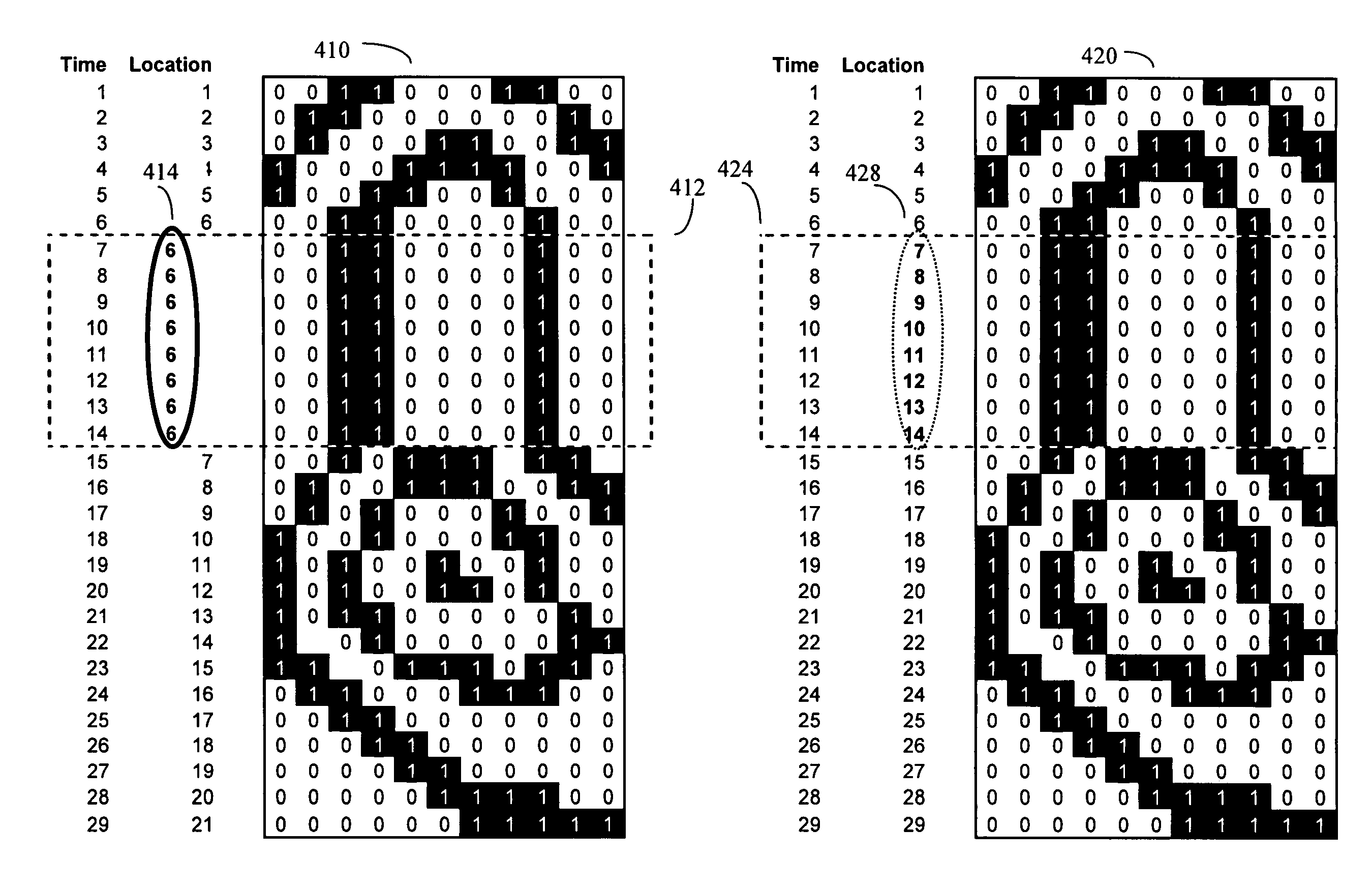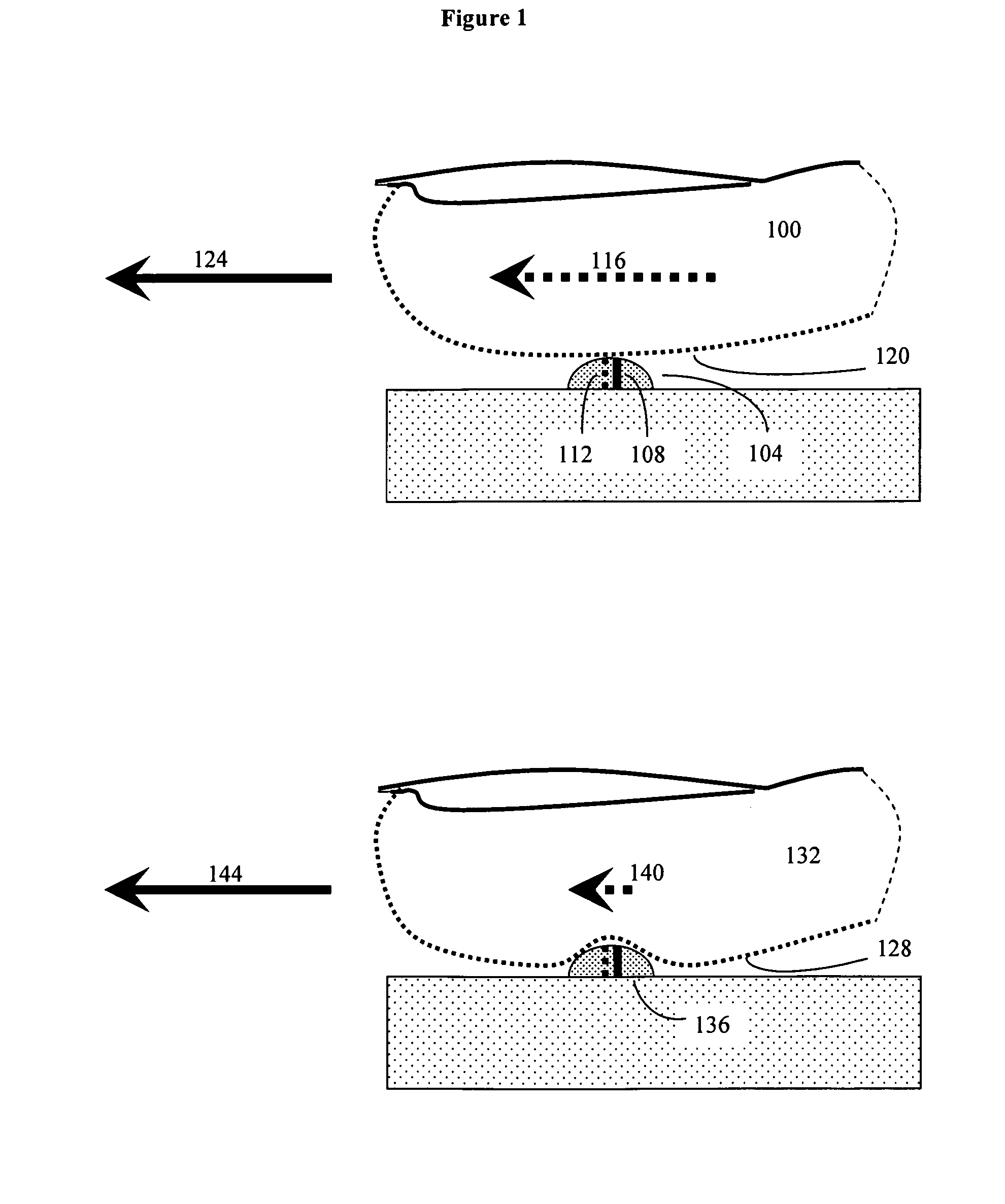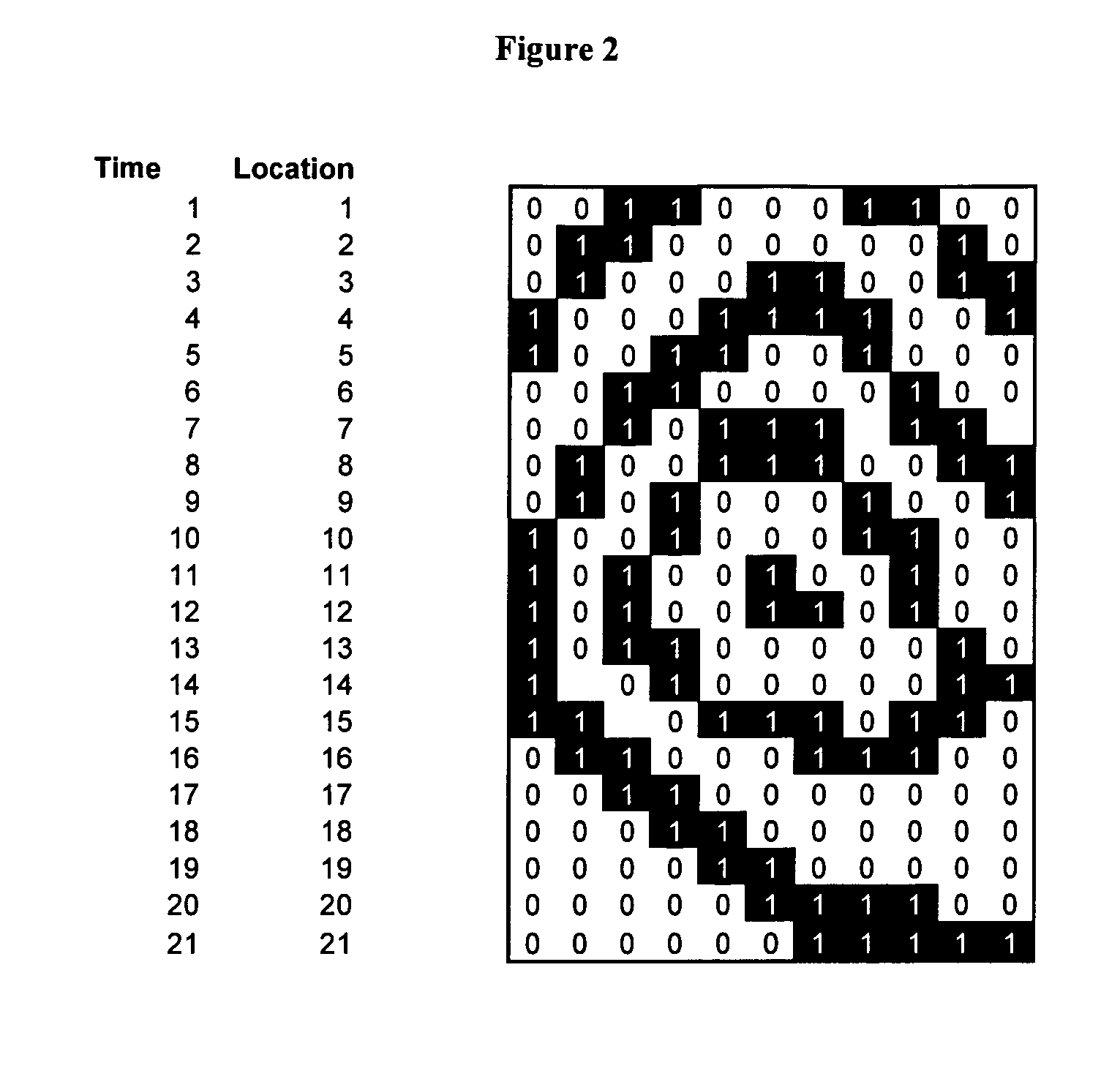System and method to remove artifacts from fingerprint sensor scans
a fingerprint sensor and artifact technology, applied in the field of system and method to remove artifacts from fingerprint sensor scans, can solve the problems of distorted image, inability to achieve normal operation, and misleading finger location stamps
- Summary
- Abstract
- Description
- Claims
- Application Information
AI Technical Summary
Benefits of technology
Problems solved by technology
Method used
Image
Examples
Embodiment Construction
[0027]In general, any biometric imaging system that operates on a partial image basis, and that may encounter distortions and artifacts due to improper motion of the biological target relative to the sensor, may be corrected by these methods. Examples of such biometric imaging systems include retinal scans, iris scans, hand prints, finger prints, and other types of scans. Although, throughout this disclosure, fingerprint stiction correction is used as an example of an image artifact that can be corrected by the present invention, it should be understood that the present methods are not limited to either stiction artifacts, or fingerprint scans.
[0028]The present invention is particularly useful for removing “stiction” artifacts from fingerprint scans recorded by one-dimensional partial fingerprint sensors. As previously discussed, such one dimensional partial fingerprint sensors generally consist of a linear array of individual sensor units, typically packed closely together at high ...
PUM
 Login to View More
Login to View More Abstract
Description
Claims
Application Information
 Login to View More
Login to View More - R&D
- Intellectual Property
- Life Sciences
- Materials
- Tech Scout
- Unparalleled Data Quality
- Higher Quality Content
- 60% Fewer Hallucinations
Browse by: Latest US Patents, China's latest patents, Technical Efficacy Thesaurus, Application Domain, Technology Topic, Popular Technical Reports.
© 2025 PatSnap. All rights reserved.Legal|Privacy policy|Modern Slavery Act Transparency Statement|Sitemap|About US| Contact US: help@patsnap.com



